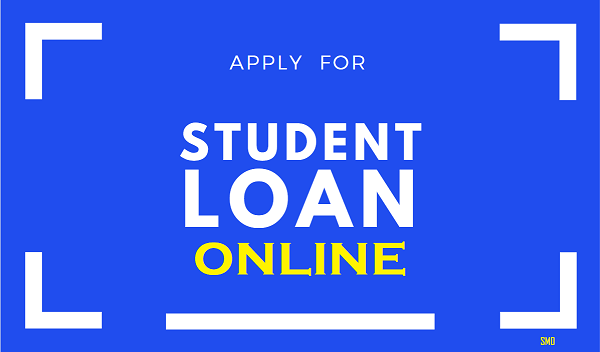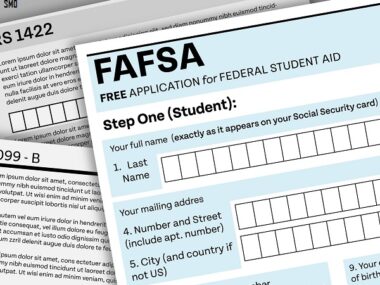Paying for college or graduate school is no small feat. With the average cost of higher education in the United States surpassing $35,000 annually, students are increasingly turning to online student loans to bridge the gap between financial aid and tuition costs.
Thanks to digital advancements, you can now apply for student loans online in minutes, often without ever stepping foot in a bank or office.
In this detailed 2025 guide, we’ll walk you through:
- The different types of student loans
- How to apply for a student loan online
- Best online lenders
- Eligibility requirements
- Tips for securing low-interest loans
- Common mistakes to avoid
What Are Student Loans?
Student loans are financial aid products designed to help students and their families pay for tuition, books, housing, and other education-related expenses.
There are two main types:
| Type | Description | Repayment Terms |
| Federal Student Loans | Issued by the U.S. government | Fixed interest, deferment options |
| Private Student Loans | Issued by banks, credit unions, fintechs | Variable or fixed rates, credit-based |
Why Apply for Student Loans Online?
- Convenience: Apply 24/7 from your phone or laptop
- Speed: Instant eligibility checks and e-signatures
- Transparency: Compare rates and terms instantly
- Paperless Process: Upload docs and receive offers digitally
- Prequalification: Soft credit checks from multiple lenders
Online student loan applications reduce processing time and improve approval speed—especially for urgent tuition deadlines.
What You Need to Apply for a Student Loan Online
Before applying, prepare:
- Social Security Number (SSN)
- Government-issued ID (passport, driver’s license)
- Proof of enrollment or acceptance letter
- School’s cost of attendance (COA)
- Personal income/tax information
- Credit history (for private loans or cosigner evaluation)
- Cosigner details (if required)
You’ll also need to create an FSA ID at fsaid.ed.gov for federal loans.
How to Apply for a Student Loan Online – Step-by-Step
Step 1: Determine Your Loan Type
- Start with federal student loans (lower interest, flexible repayment)
- If more funding is needed, consider private loans
Step 2: Complete FAFSA for Federal Loans
- Visit studentaid.gov
- Submit the Free Application for Federal Student Aid (FAFSA)
- Receive your Student Aid Report (SAR) and loan eligibility
Step 3: Research Private Lenders (If Needed)
- Compare interest rates, APRs, repayment plans, deferment options, and fees
- Use loan comparison platforms like Credible, LendKey, or Juno
Step 4: Prequalify with Multiple Lenders
- Most private lenders allow soft credit checks
- See your potential rates without affecting your credit score
Step 5: Complete the Online Loan Application
- Provide personal, financial, and academic details
- Upload required documents
- Add a cosigner if necessary
Step 6: Review and Sign Your Loan Agreement
- Read all terms carefully
- E-sign using your digital ID
- Wait for school certification (1–10 days depending on institution)
Step 7: Receive Funds
- Funds are sent directly to your school’s financial aid office
- Refunds are issued to you for any overage
Top Online Student Loan Providers in 2025
| Lender | Best For | APR Range | Cosigner Option |
| Sallie Mae | Undergraduate + Graduate | 4.50% – 14.49% | ✅ |
| SoFi | Graduate + Refinance | 4.99% – 12.99% | ✅ |
| Discover | No fees | 4.99% – 13.99% | ✅ |
| College Ave | Flexible terms | 4.13% – 14.96% | ✅ |
| MPOWER Financing | International students | 7.99% – 13.99% | ❌ |
| Earnest | No fees, extra payments | 4.45% – 12.95% | ✅ |
Rates above are based on borrower creditworthiness and subject to change. Always shop around.
Tips to Get the Best Student Loan Rates Online
- Apply with a cosigner – Helps reduce interest
- Check your credit score – Aim for 650+
- Choose fixed rates for stable monthly payments
- Use autopay – Most lenders offer 0.25% discounts
- Borrow only what you need – Avoid excess debt
Federal vs Private Student Loans – Quick Comparison
| Feature | Federal Loans | Private Loans |
| Credit Check | Not required (except PLUS) | Required |
| Interest Rates | Fixed (lower) | Variable or fixed |
| Repayment Flexibility | High (income-driven, forgiveness) | Limited |
| Cosigner Needed | No | Often yes |
| Subsidized Option | Yes (for undergrads) | No |
| Loan Forgiveness | Yes (PSLF, IDR) | No |
Eligibility Requirements
To qualify for federal or private student loans, you must:
- Be enrolled at an eligible institution
- Be a U.S. citizen or eligible noncitizen (federal loans)
- Meet minimum credit requirements (private loans)
- Maintain satisfactory academic progress
- Be at least 18 years old
FAQs – Apply for Student Loan Online
Q1: Can I apply for student loans online without a cosigner?
Yes, but your chances increase with a cosigner unless you have strong credit or choose cosigner-free lenders like MPOWER.
Q2: How long does it take to get approved?
Federal loans are approved within weeks of FAFSA submission. Private loans can be approved in 1–7 days.
Q3: Can I get a student loan if I have bad credit?
Yes, with a creditworthy cosigner or by choosing lenders that cater to students with limited credit.
Q4: Do student loans go directly to me?
Usually, funds go to the school first, and any excess is refunded to you.
Q5: Can I apply for multiple student loans online?
Yes. You can submit applications to multiple private lenders to compare offers. Just watch for hard inquiries if you accept multiple loans.
Repayment Options After Graduation
- Grace Period: 6 months post-graduation
- Standard Plan: Fixed monthly payment for 10 years
- Graduated Plan: Starts low, increases every 2 years
- Income-Driven Repayment (IDR): Adjusted based on income
- Deferment and Forbearance: Temporary payment pause if needed
- Loan Forgiveness: Federal loans may qualify for PSLF or IDR forgiveness
Use tools like the Student Loan Repayment Estimator at studentaid.gov to plan ahead.
Common Mistakes to Avoid
- Not comparing loan offers
- Borrowing more than necessary
- Ignoring repayment options
- Choosing variable rates without understanding the risk
- Missing FAFSA deadlines
- Not understanding loan terms and conditions
Secure Your Student Loan Online with Confidence
Applying for a student loan online in 2025 is easier than ever. Whether you’re opting for federal loans through FAFSA or seeking private student loans from online lenders, the digital process is faster, more secure, and fully transparent.
Start with federal loans, supplement with private loans if needed, and always compare offers before signing.
Invest wisely in your education today—because your financial future starts now.










